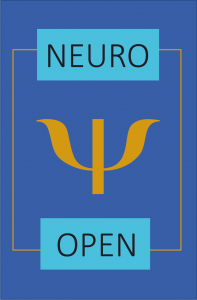”The literary reviews are extensive and provide valuable up-to-date information on clinically relevant topics. It seemed frustrating to think that they would be left for internal use only in education. The Editori platform provided just the right environment for publishing articles, and this led to the creation of a new publication”, says Laura Hokkanen, editor-in-chief of Neuropsy Open journal. Neuropsy Open brings literature reviews written in special psychologist training to a wider readership.
(Tämä artikkeli on saatavilla myös suomeksi.)
The Think Open blog article series presents journals published on the University of Helsinki’s Editori platform. The interviewees are journal editors, who talk about open access publishing in general, as well as the uses of the Editori publishing tool provided by the library.
In the third part of the series, Laura Hokkanen (TUHAT, ORCID, @laurahok), professor of clinical neuropsychology at the University of Helsinki, will be interviewed. Hokkanen is the editor-in-chief of Neuropsy Open journal.
What kind of journal is Neuropsy Open?
 Laura Hokkanen: ”The first issue of the Neuropsy Open [https://journals.helsinki.fi/neuropsyopen/] online publication was published in June 2020. Now, in February 2021, a total of three issues are already out. The publication was established primarily for the needs of specialisation programme in neuropsychology. At the end of their training, students write systematic literature reviews on topics related to their own work. Literature reviews written in Finnish are an interesting read for all neuropsychologists doing clinical work. Therefore, there was a desire to make them more widely available to others. In addition to the reviews written during specialisation training, the first issues of Neuropsy Open also contain brief reviews of recent dissertations and masters’ theses related to clinical neuropsychology. At this point, we have no plans to publish articles offered us from elsewhere, but the idea is not completely ruled out in the future.”
Laura Hokkanen: ”The first issue of the Neuropsy Open [https://journals.helsinki.fi/neuropsyopen/] online publication was published in June 2020. Now, in February 2021, a total of three issues are already out. The publication was established primarily for the needs of specialisation programme in neuropsychology. At the end of their training, students write systematic literature reviews on topics related to their own work. Literature reviews written in Finnish are an interesting read for all neuropsychologists doing clinical work. Therefore, there was a desire to make them more widely available to others. In addition to the reviews written during specialisation training, the first issues of Neuropsy Open also contain brief reviews of recent dissertations and masters’ theses related to clinical neuropsychology. At this point, we have no plans to publish articles offered us from elsewhere, but the idea is not completely ruled out in the future.”
”Specialisation programme in neuropsychology is organized at the University of Helsinki, Faculty of Medicine, Department of Psychology and Logopedics. The editorial board of the Neuropsy Open journal consists of teachers and researchers from the department; the editor-in-chief is Laura Hokkanen, professor of clinical neuropsychology. Journal editors make the layout for articles and prepare reviews of dissertations and master’s theses. Written permission is also required from authors to publish articles based on their final diploma papers . There is no separate peer review – the articles have been checked as part of the training programme, in connection with the acceptance for the diploma.”
At the end of their training, students write systematic literature reviews on topics related to their own work. Literature reviews written in Finnish are an interesting read for all neuropsychologists doing clinical work. Therefore, there was a desire to make them more widely available to others.
Why did you choose the Editori platform?
LH: ”The idea of making the final diploma papers available for publication, for others to read, has lived on for a long time. Specialisation programme in neuropsychology has been provided at the University of Helsinki since 1997. Until 2016, the training led to a licentiate degree and empirical research articles were written as licentiate degree theses. The theses were very often published in international or Finnish-language peer-reviewed journals. As the form of education changed and the scope of the theses decreased, empirical research articles are written only in exceptional cases. The literary reviews are also extensive and provide valuable up-to-date information on clinically relevant topics. It seemed frustrating to think that they would be left for internal use only in education. The Editori platform provided just the right environment for publishing articles, and this led to the creation of a new publication.”
What kind of tool is Editori for journal editors?

LH: ”We chose the Editori because the service was linked to the university’s own activities and because the platform is backed by the international Open Journal Systems and Public Knowledge Project community. Publishing on Editori platform is free, open and electronic, and articles are published under a Creative Commons license. Using the Editori tool requires a little practice but it doesn’t seem unreasonably difficult to use even for a non-professional. We received good guidance for the implementation from the Helsinki University Library. Kimmo Koskinen and Markku Roinila have provided orientation from the beginning and helped with all practical issues. Ready-made templates support rapid deployment. Of course, when designing the first issue a lot of time was spent on layout decisions (journal logo, cover art strategy, layout solutions etc.). But this work only needs to be done once, after which the next issues will be released faster. So far, we have found that Microsoft’s Word isn’t necessarily a good tool for layout, and a more appropriate program for that purpose is in search.”
Using the Editori tool requires a little practice but it doesn’t seem unreasonably difficult to use even for a non-professional.
What tips would you have for those journal editors who are planning to become Editori users?
LH: ”My own experiences are purely positive. If/when a decision is made on a publication, the Editori will provide a good and workable structure to implement the idea. As an author of academic work, writing articles has become very familiar to me. It’s fun to be a publisher for a change and think about this side of the process – especially when it can be done in such a smooth and light environment.”
Articles published in the Editori Stories:
